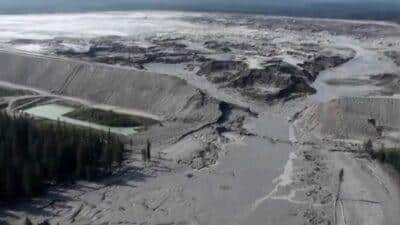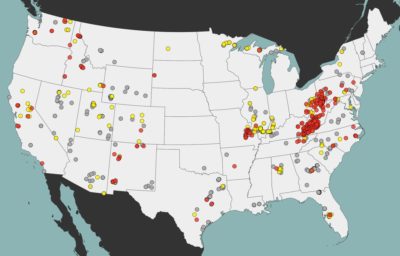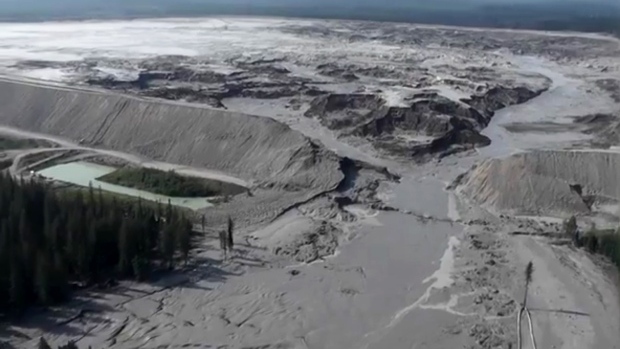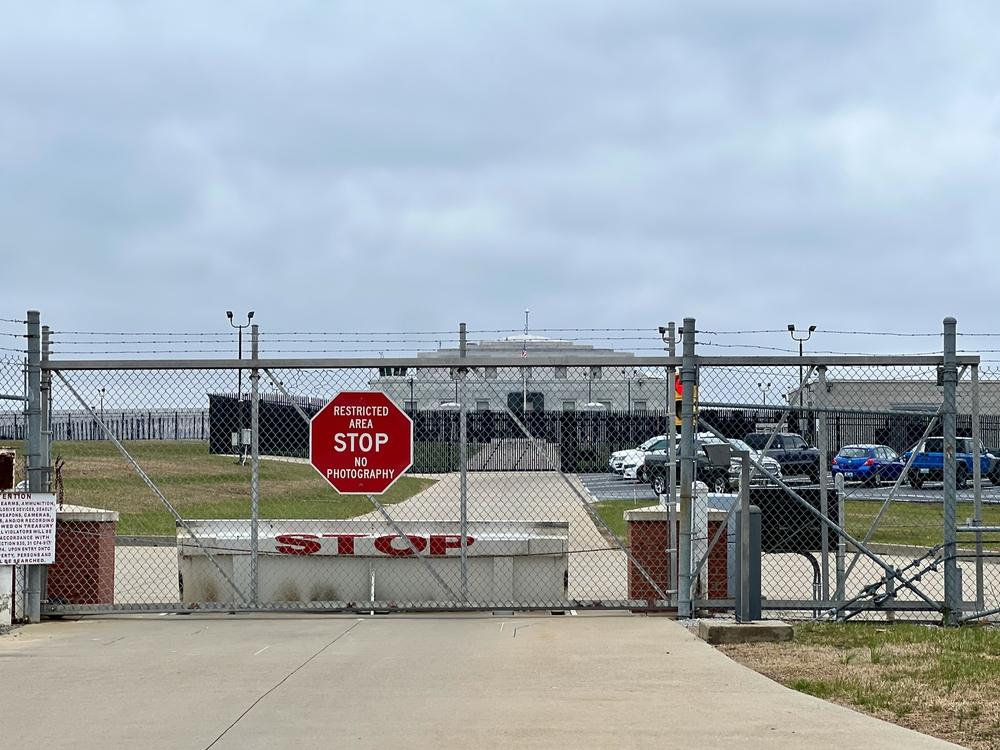
Homes and entire communities could be covered with billions of gallons of water and toxic sludge because of the collapse of poorly built mining dams, which number more than 900 across the United States, according to new data.
The threat to public safety and even to drinking water is in the spotlight following such a catastrophe at the Mount Polley copper and gold mine in central British Columbia last year.
On August 4, 2014, a dam on a tailings pond collapsed and released 6.6 billion gallons of arsenic laced sludge into a creek and a lake, depriving 300 people and the entire town of Likely, British Columbia, of drinking water.
The cause of the disaster was a poorly designed dam and the practice of storing waste from mining in giant ponds next to mines, a panel of experts convened by British Columbia’s government found, according to the The Vancouver Sun. The panel’s findings prompted the province’s Minister of Mines to inspect all 123 mining dams in British Columbia.
It Could Happen Here
“The U.S. has more than 900 mining dams that could wreak havoc like Mount Polley’s did, threatening towns, streams, and people from coast to coast,” BuzzFeed reported.
World’s Smallest Solar Generator … Priced So Low Anyone Can Afford It!
The new fear was prompted by a letter from a coalition of environmental groups to the EPA and the Bureau of Land Management. BuzzFeed subsequently examined the data on America’s mining dams and issued its own analysis.
 “We have a whole lot of tailings dams in the United States,” Glenn Miller, a geochemist at the University of Nevada, told BuzzFeed. “Mount Polley is an extreme example of the risks. But every dam leaks and even if they don’t suffer a breach, we have to live with the waste from them for a long, long time.”
“We have a whole lot of tailings dams in the United States,” Glenn Miller, a geochemist at the University of Nevada, told BuzzFeed. “Mount Polley is an extreme example of the risks. But every dam leaks and even if they don’t suffer a breach, we have to live with the waste from them for a long, long time.”
Such dams can be a hazard because chemicals are used in mining and mineral extraction, and the waste left over from mining is often simply dumped into ditches or ponds near the dam and left there.
Many mining dams are nothing but a dirt wall across a valley designed to keep toxic sludge in. The Mount Polley dam collapsed when heavy rains caused the pond behind it to overflow.
“Long term safety and stability of tailings dams is a crucial public safety issue, yet there’s no federal agency responsible for oversight of tailings dam safety and many states impose few if any requirements,” a letter from the Sierra Club, EARTHWORKS and several other organizations to the EPA states.
Some of Buzzfeed’s disturbing findings include:
- There are more than 300 mining dams in the United States that carry a “high” hazard designation. That means failure of the dam would cause a loss of human life.
- Another 203 dams are a “significant” risk, meaning their collapse would cause significant environmental damage like that at Mount Polley.
- There are 104 high risk dams in the state of West Virginia alone.
Mining dams are an obsolete technology, say experts Steven Vick and Norbert Morgenstern, the latter the chairman of the committee that investigated Mount Polley. The two think that sealed storage domes would be a better and safer but more expensive solution.
“We can’t continue business as usual,” Vick said. “We can’t continue to use technology that’s 100 years old.”
Summitville Mine Catastrophe
There have been a number of environmental catastrophes in the United States similar to the Mount Polley incident.
One of the worst is the notorious Summitville Mine in Del Norte County, Colorado. In 1991, the state of Colorado ordered the gold mine shut down after discovering that 160 million gallons of water contaminated with cyanide, acid and heavy metals was stored there. The water was kept in a giant pond a short distance from two creeks that flow into the Alamosa River. The Alamosa River provides water to several towns, including Alamosa, and many farms.
State inspectors later concluded that 85,000 gallons of toxic water had leaked out of the mining pond and had killed fish in the Alamosa River. Since 1991, the state and federal government have spent $155 million in attempts to clean up the mess at Summitville.
Do you believe such mines are a threat to safety and even drinking water? Share your thoughts in the section below.
Sign up for Off The Grid News’ weekly email and stay informed about the issues important to you











